Exhibition
Is it possible to be a revolutionary and like flowers?
This series, inspired by Sogetsu ikebana, has been successively created since 2011. The title of the series is quoted from a biography of Lenin written by Marcel Liebman, and the title of each piece is derived from a book. Book titles and authors, names of flowers used, and quotes from books are exhibited along with the respective pieces.
The series may be described as a "library of books translated into flowers". The extensive line-up of books including literature, philosophy, and anthropology conveys Henrot's broad perspective and interests. Looking closely at each piece, one may notice that the combination of the book and flowers has specific meanings. In addition to creating playful balance between shapes, she combines the content of a book with the flower name (common name or botanical name) and the botanical character or the unique cultural background of the flower. Henrot's sincere and playful ideas and sensitivities stimulate each viewer's imagination. The artist herself is extremely thrilled to collaborate with the Sogetsu Foundation in creating this work for the exhibition.
Ikebana in collaboration with MOTOE Katei and NAKADA Kazuko (Sogetsu Ikebana)
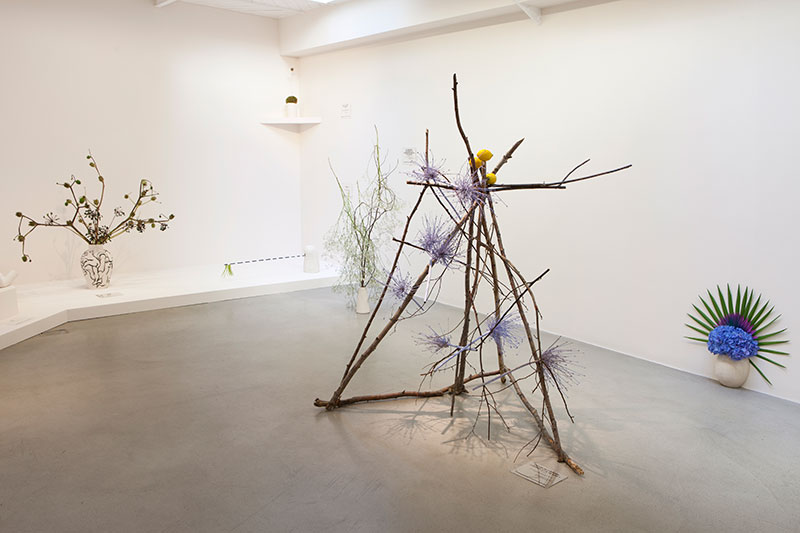
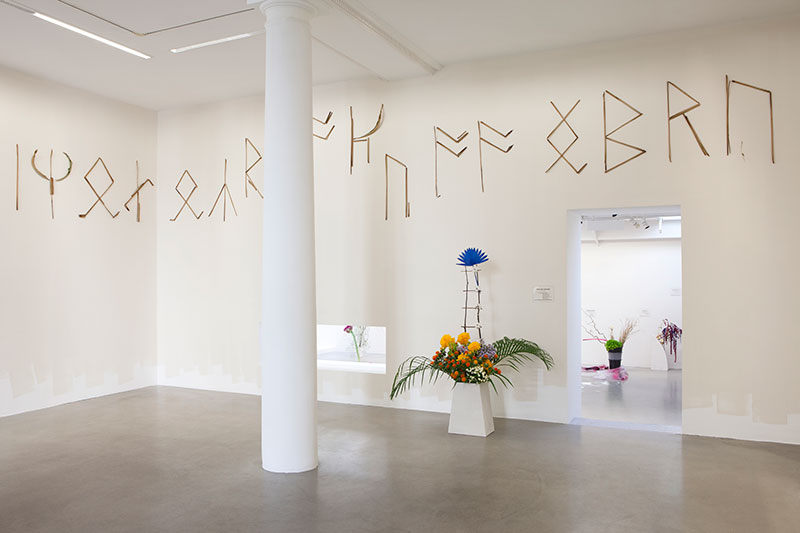
2011– mixed media
installation view at galerie kamel mennour (2012)
photo: Fabrice Seixas
-
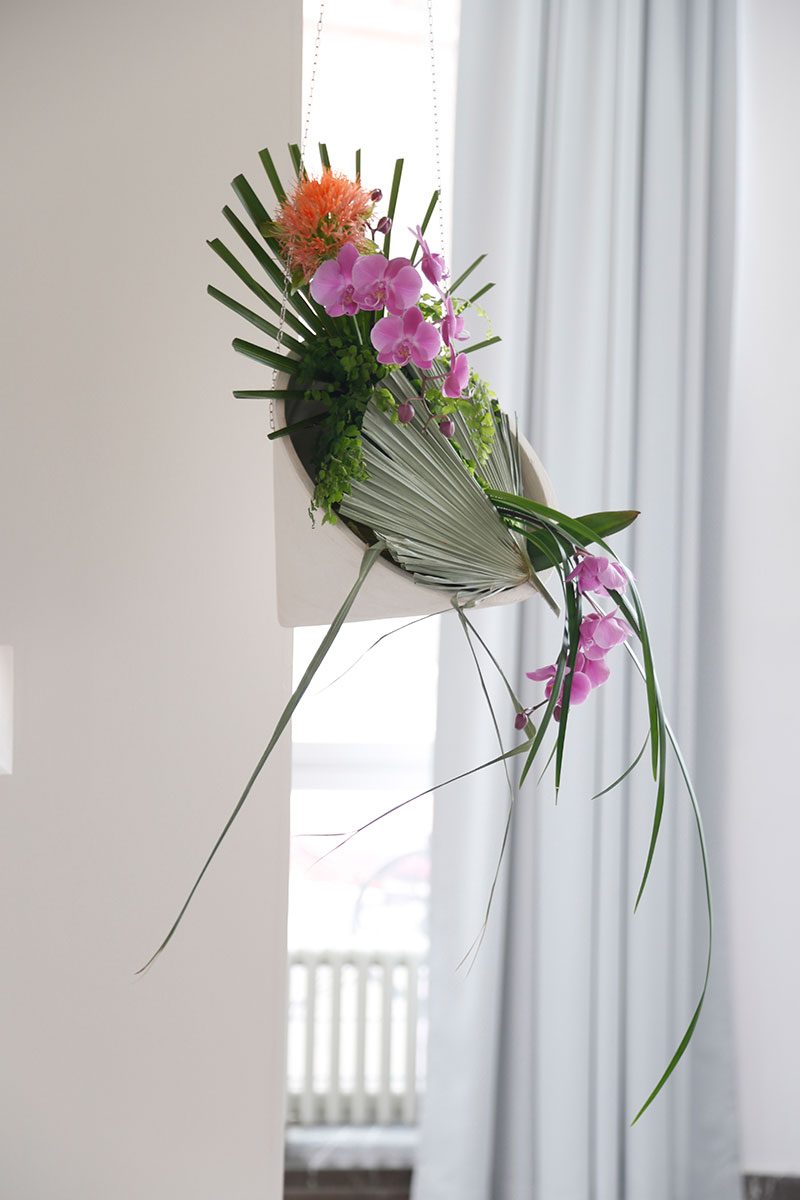
-
The Tale of Genji Murasaki Shikibu
2014 mixed media
installation view at Schinkel Pavillon (2014)
courtesy the artist and galerie kamel mennour (Paris/London) Metro Pictures (New York) KÖNIG GALERIE (Berlin)
© ADAGP, Paris & JASPAR, Tokyo 2019
Identity Crisis
The drawings which Henrot has been making since the early days of her career are artworks that directly reveal objects of her interest and her train of thoughts. The images featuring unfettered brushstrokes of watercolour or ink and her rich sense of humour convey Henrot's penetrating insights into the relationship between the system extensively regulating the world and the inner world of feelings and imagination. The exhibited work extracted from the recent series entitled 〈Identity Crisis〉 reflects her ideas inspired by the unique characteristics of a piece of clothing that creates depth when worn on the body while becoming completely flat when taken off. As exemplified by her keen observation on the depth and flatness of clothing, ambiguity is one of the concepts that fascinate Henrot most. For example, stripes or checks are two-dimensional fabric patterns but become three-dimensional elements emphasising the depth when worn on the body. While clothes are generally considered superficially (not internally) related to a person wearing them, Henrot considers clothes as the representation of one's identity. The title 《Don’t Fit 1》 raises the question of the conflict or inadequacy between the subject, the self and the multiple identities to which he/she respectively adapts oneself.
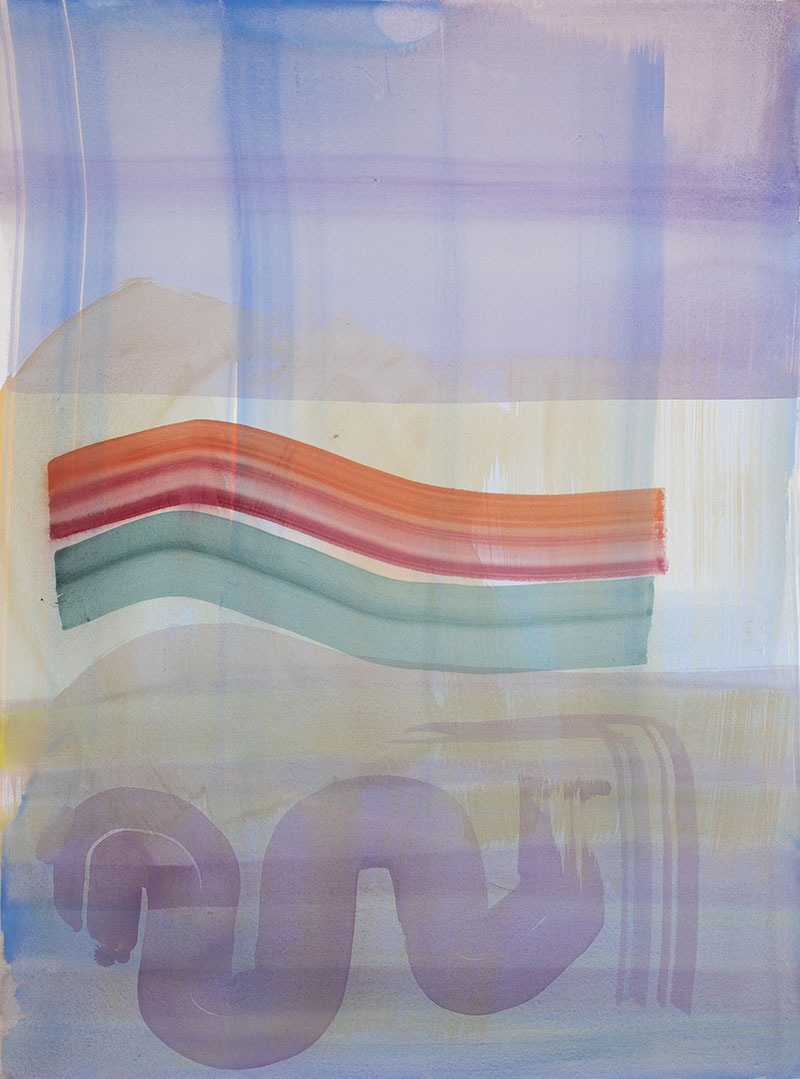
2018 watercolour and ink on paper
-
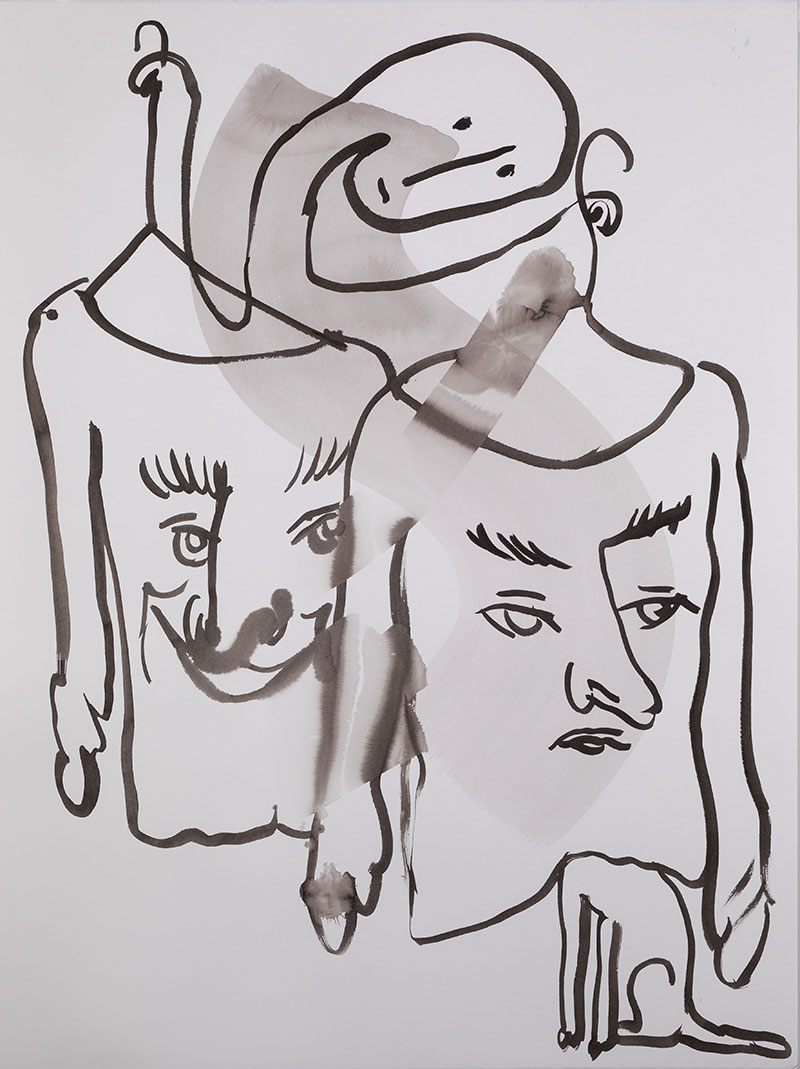
-
How Do You Feel
2019 ink on paper
courtesy the artist and galerie kamel mennour (Paris/London) Metro Pictures (New York) KÖNIG GALERIE (Berlin)
© ADAGP, Paris & JASPAR, Tokyo 2019
Grosse Fatigue
The work was created based on research Henrot conducted using the enormous archival resources of the Smithsonian Artist Research Fellowship programme in Washington DC, U.S. The Smithsonian Institution is a growing collection of more than 300-million artifacts, artworks, natural specimens, and records. Inspired by the institution’s imagined completeness, Henrot investigated a society’s efforts to gather and structure knowledge in a totalised world view. Stories of the creation of the world are narrated by a performance artist Akwatey Orraca-Tetteh with music by Joakim and text co-written by Jacob Bromberg and Henrot. The mystery of creation and the emergence of life stirred the imaginations of ancient people and many creation myths were conceived. Human beings, on the other hand, also developed knowledge system in efforts to organize and understand the world intellectually. The accumulation of collected, classified, systematised, diverse yet "flattened" materials also connotes death. If extinct beings are recorded through a process of accumulation, natural history and today's technical information society may be interpreted as a balance between eternity and death. Embracing contradictions between the rational and the transitory; Grosse Fatigue integrates the almost violent human desire to collect, with the mythical world of vivid memory and creativity that cannot be understood by collected knowledge. This video and audio work received the Silver Lion at the 55th Venezia Biennale in 2013.
-
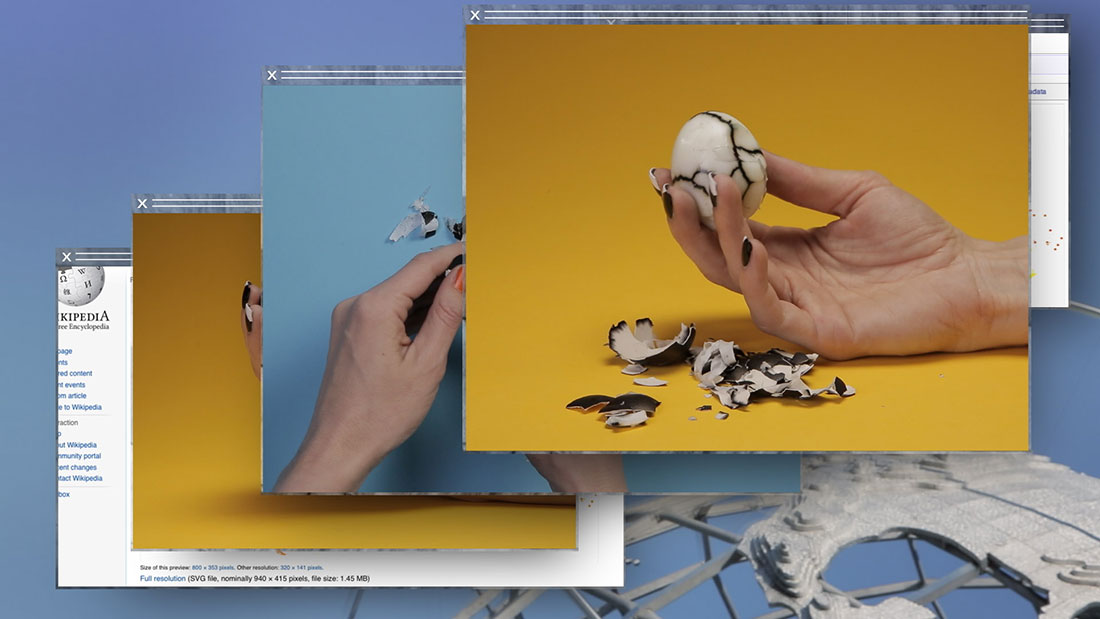

-
Grosse Fatigue
2013 video (13 min.)courtesy the artist, Silex Films, galerie kamel mennour (Paris/London) Metro Pictures (New York) KÖNIG GALERIE (Berlin)
© ADAGP, Paris & JASPAR, Tokyo 2019
The Pale Fox
Occupying the entire exhibition space, this multi-layered art installation represents the orders and ambiguities of the world. Gottfried Wilhelm Leibniz’s four principles relating to nature, contradiction, reason and continuity are respectively portrayed on the four walls, creating an immersive study on topics including stages of the formation of the universe, human growth, and ages of human civilization. Information accumulated in chaotic coexistence and the classification of a vast number of objects, images, and gestures become an excess of impressions showing the failure of systems and rationality. This installation, considered the counterpart to the video work Grosse Fatigue, embodies the articulation of gaps and connections between private individual and global subject, what is limited and what is unlimited.
-
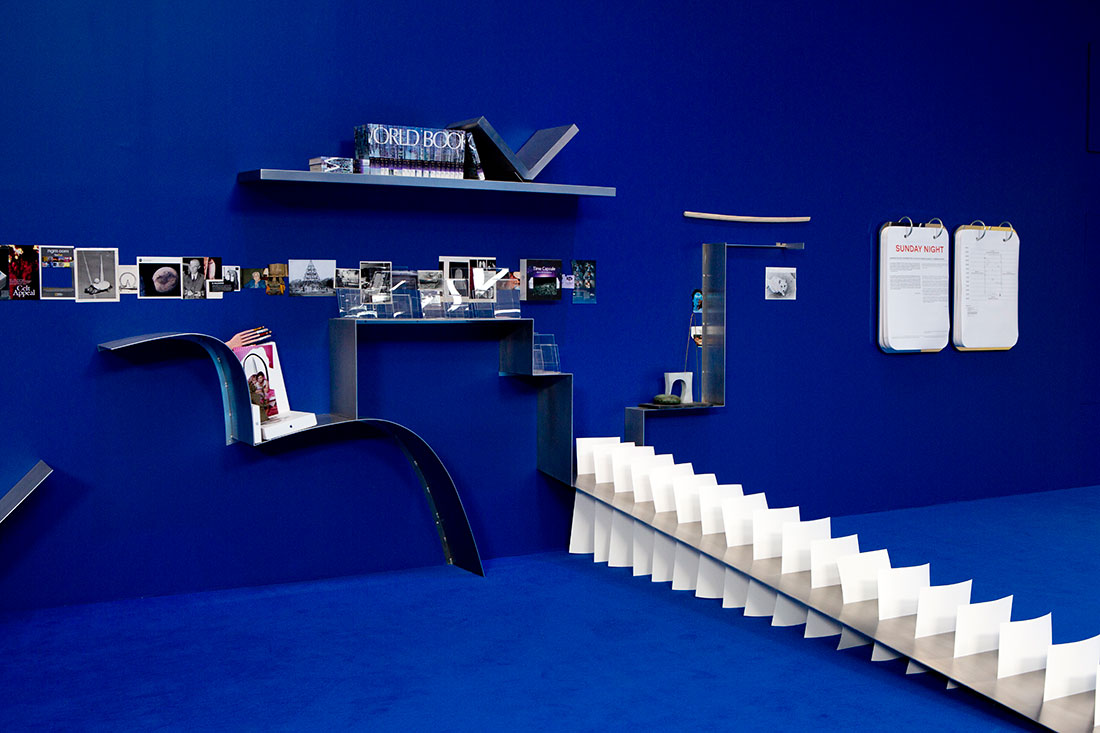
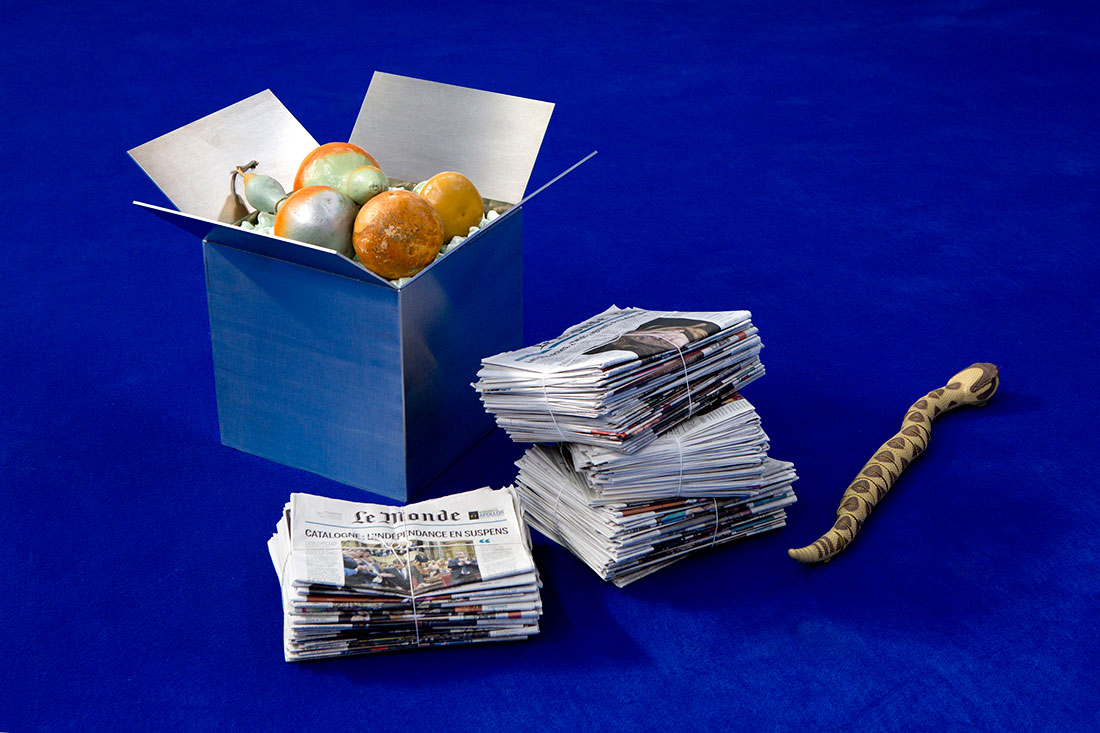
-
The Pale Fox
2014 mixed media installation
installation view at Palais de Tokyo (2017)
photo: Zachary Tyler Newtoncourtesy the artist and galerie kamel mennour (Paris/London) Metro Pictures (New York) KÖNIG GALERIE (Berlin)
© ADAGP, Paris & JASPAR, Tokyo 2019



